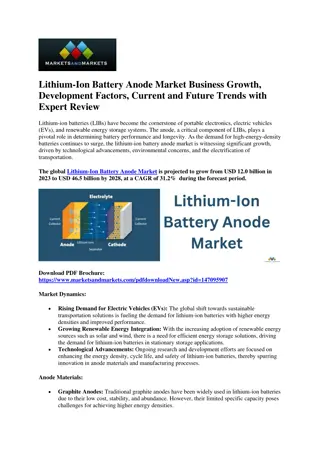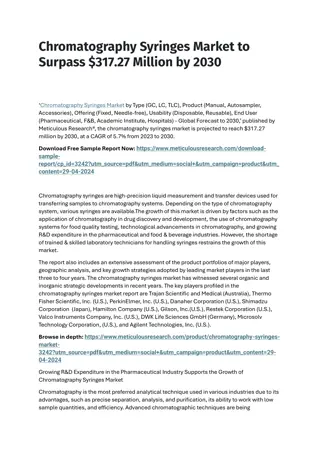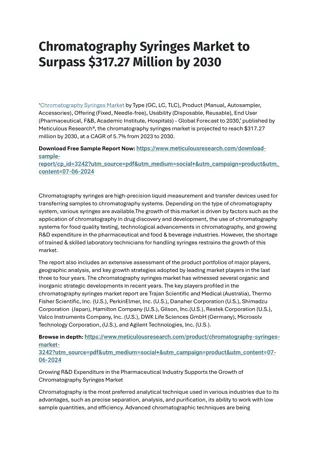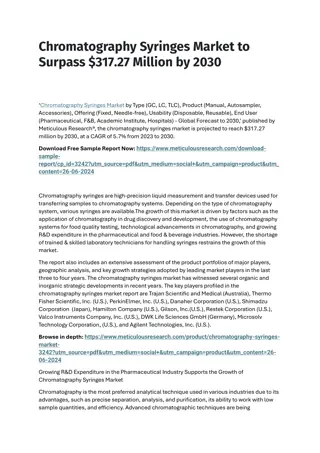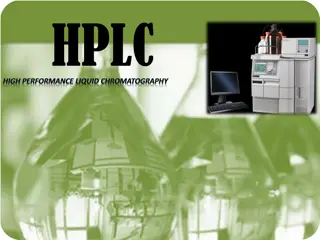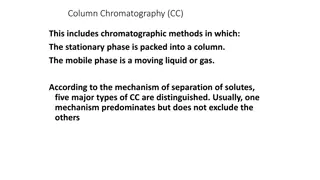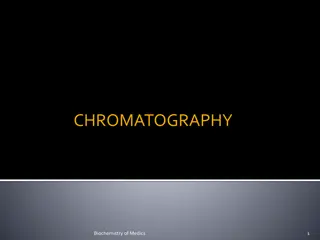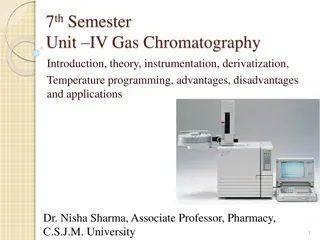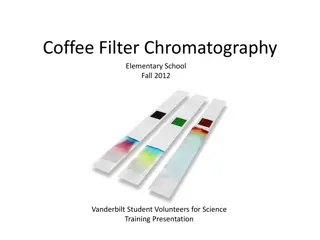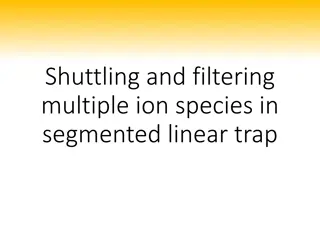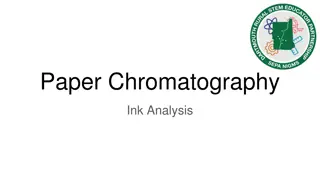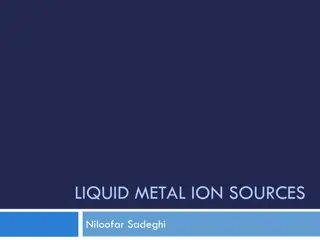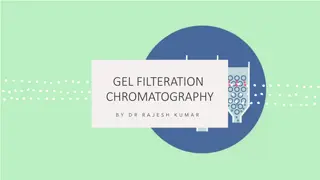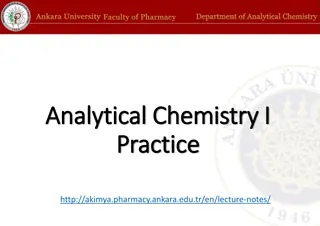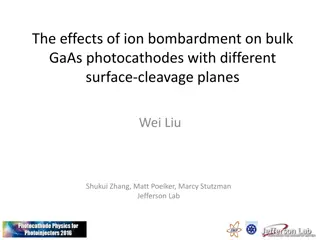Understanding Ion Exchange Chromatography in Analytical Chemistry
Ion exchange chromatography is a powerful separation technique that isolates ions and charged molecules based on their affinity for a charged matrix. This method involves interactions between the analyte and matrix influenced by factors like net charge, ionic strength, and pH. Through cation exchange chromatography and anion exchange chromatography, positively and negatively charged analytes are separated using matrices with corresponding functional groups. Understanding these principles is crucial for mastering analytical chemistry techniques.
- Ion Exchange Chromatography
- Separation Technique
- Analytical Chemistry
- Cation Exchange
- Anion Exchange
Download Presentation

Please find below an Image/Link to download the presentation.
The content on the website is provided AS IS for your information and personal use only. It may not be sold, licensed, or shared on other websites without obtaining consent from the author. Download presentation by click this link. If you encounter any issues during the download, it is possible that the publisher has removed the file from their server.
E N D
Presentation Transcript
Advanced Analytical Chemistry 1 Separation Technique, Chromatography For Postgraduate (Master's degrees) Lecture No. 4 By Asst. Prof. Dr. Layla Salih Al-Omran
There are several types of liquid chromatography: 1. Normal phase chromatography. 2. Reverse phase chromatography. 3. Ion exchange chromatography. 4. Size exclusion chromatography. 5. Affinity chromatography.
Ion exchange chromatography (IEX) IEX chromatography separates ions and charged molecules based on their affinity towards the appositively charged matrix (ion exchanger). It works on almost any kind of charged molecule including large proteins, small nucleotides, and amino acids. Mobil phases consist an aqueous buffer system into which the mixture to be resolved. The stationary phase usually made from inert organic matrix chemically derivative with ionizable functional groups. Ions which exist in a state of equilibrium between the mobile phase and stationary phases giving rise to two possible formats, anion and cation exchange are referred to as counter ion.
Ions which exist in a state of equilibrium between the mobile phase and stationary phases giving rise to two possible formats, anion and cation exchange are referred to as counter ion.
The interaction between matrix and analyte is determined by net charge, ionic strength and pH of the buffer. For example, when analytes loaded onto a negatively charged matrix, the neutral or negatively charged analyte will not bind to the matrix whereas positively charged analyte will bind as per their relative charge and needed higher concentration of counter ion to elute from matrix.
a- Cation exchange chromatography Analyte is positively charged and matrix has a negatively charged functional group. The matrix have negative functional groups such as carboxyl (- COO-), carboxy methyl (- CH2COO-) and sulpho (- SO3-), and sulpho methyle (- CH2SO3-).
b. Anion Exchange chromatography- Analyte is negatively charged and matrix has a positively charged functional group. The negatively charged analyte replaces the reversible bound anion and binds to the matrix Matrix such as amino ethyl (- CH2CH2 NH3+) and trimethyl amino ethyl.
4. Size exclusion chromatography (gel filtration chromatography) Size exclusion chromatography (SEC), is a chromatographic method that molecules based particle size. separates on their It is usually applied to large molecules or macromolecular complexes such as proteins and polymers.
What is the principle of size exclusion chromatography? The column is packed with the beads containing pores to allow entry of molecules based on their sizes. Smallest size in the inner part of pore followed by gradual increasing size and largest molecule excluded from entering into the gel. The separation occur due to the time they travel to come out from the pores. The small molecules present in the inner part of the gel takes longer flow of liquid (or time) and travel longer path to come out where as larger molecules travel less distance to come out. As a result, the large molecule and small molecule get separated from
5. Affinity chromatography. The affinity chromatography works on the principle of mutual interaction between a ligand (L) and receptor (R) forms ligand- receptor complex (RL) with a dissociation constant Kd, which is expressed as follows
Dissociation constant Kd is specific to the receptor-ligand pair and number of interaction between them. when a crude mixture is passed through an affinity column, the receptor present on the matrix reacts with the ligand present on different molecules. The affinity between receptor on matrix and ligands and consequently the best choice bind to the receptor whereas all other molecules do not bind and appear in flow through. A wash step removes remaining weakly bound molecules on matrix. Subsequently, a counter ligand is used to elute the bound molecule through a competition between the matrix bound molecule and counter ligand.
Advantages of Affinity chromatography- 1. Specificity: Affinity chromatography is specific to the analyte in comparison to other purification technique which are utilizing molecular size, charge, hydrophobic patches or isoelectric point etc. 2. Purification Yield: Compared to other purification method, affinity purification gives very high level of purification fold with high yield. In a typical affinity purification more than 90%recovery is possible. 3. Reproducible: Affinity purification is reproducible and gives consistent results from one purification to other as long as it is independent to the presence of contaminating species. 4. Easy to perform: Affinity purification is very robust and it depends on force governing ligand-receptor complex formation. Compared to other techniques



